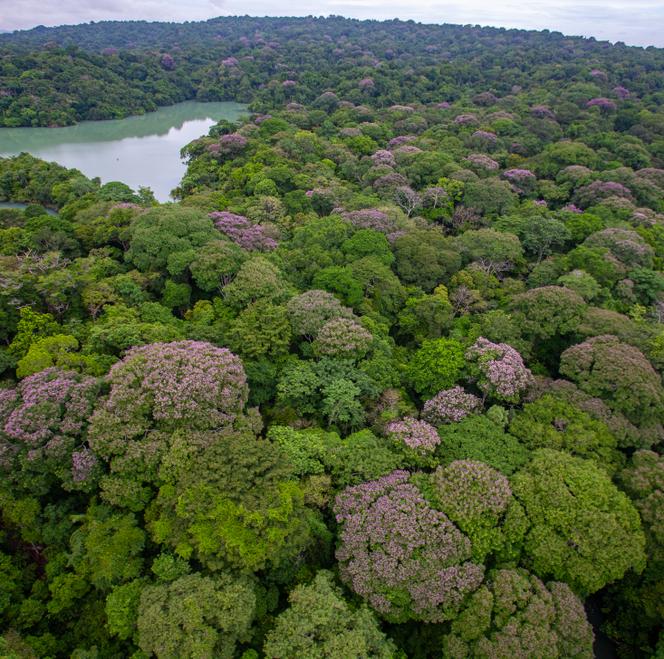


It is undoubtedly one of the most closely monitored tropical forests in the world. Since 1982, on Barro Colorado Island, in the Gatun man-made lake of the Panama Canal, a 1,000-meter by 500-meter rectangle has been the subject of an exhaustive census every five years, and every three years since 2015, of trees and shrubs 3 meters in height and upwards. Scientists now have a unique database of over 200,000 specimens – their species, size, dispersal, evolution, etc. Like all tropical forests, Barro Colorado boasts an incredible variety of tree species, with over 300 different species on this plot alone – European forests contain 450 in total.
Since the 1970s and the work of two American ecologists, Daniel Janzen and Joseph Connell, we have known that this specificity can be explained by a phenomenon of repulsion between two trees of the same species. In essence, an individual tree's parasites (fungi, bacteria or small insects) attack the young shoots from its seeds within a short radius, leaving plenty of room for seedlings of other species to flourish. In temperate forests, the opposite is true: Mycorrhizae help the most resistant species to prevail over others in the same ecological niche.
Numerous studies have since demonstrated and better understood the "Janzen-Connell effect," according to which, for trees of the same species, the greater their density, the less a shoot is likely to thrive. The originality of the study published in Science, on August 4, by a team of international researchers, is that they measured this repulsive effect between conspecifics well beyond the natural radius of seed dispersal. And, above all, they discovered that this exclusion phenomenon does not only affect young seedlings, but also more mature trees.
To reach this conclusion, Michael Kalyuzhny, a postdoctoral fellow in biology at the University of Austin, Texas, and the paper's first author, built an original model that compares the observed dispersal of species in this 50-hectare plot with that of random seed dispersal around existing adult trees. "We were really surprised by the results," explained Annette Ostling, associate professor of systems biology at Austin and co-author of the article. She cited the case of the purple-flowered Dipteryx oleifera: "The distance between an adult tree and its nearest neighbor is 5.5 times as far as expected based on where the seeds fall, and each tree has only 2% of the neighbors expected within 20 meters."
You have 42.69% of this article left to read. The rest is for subscribers only.
